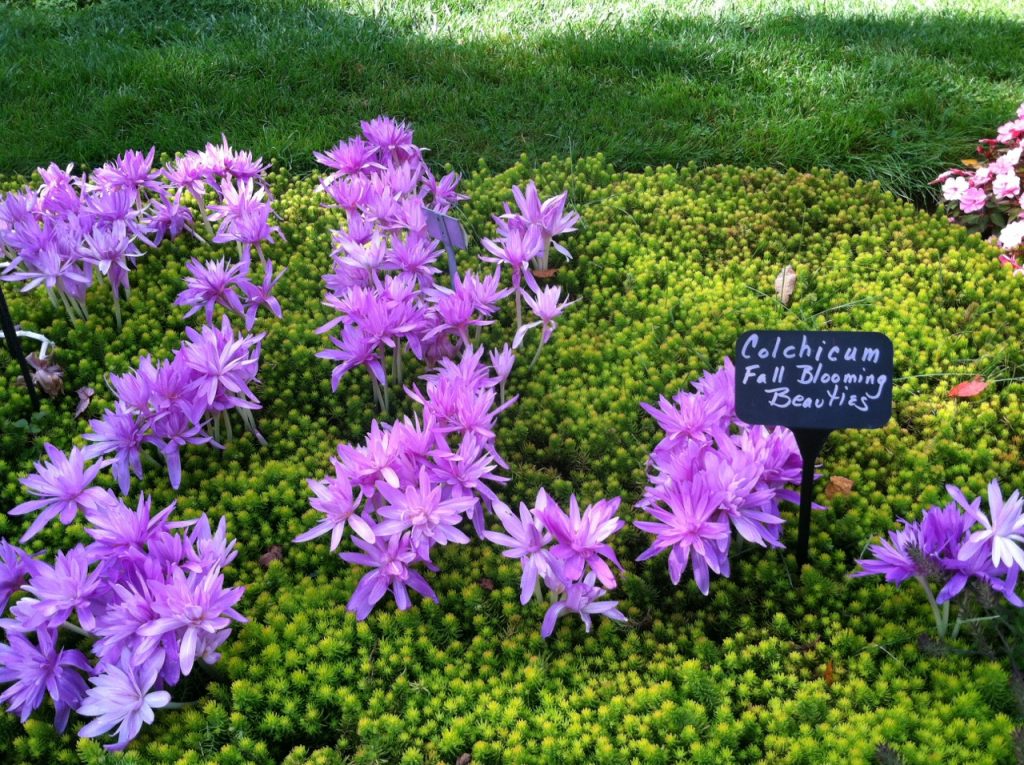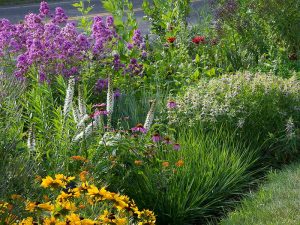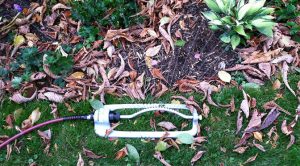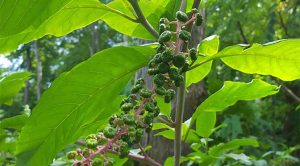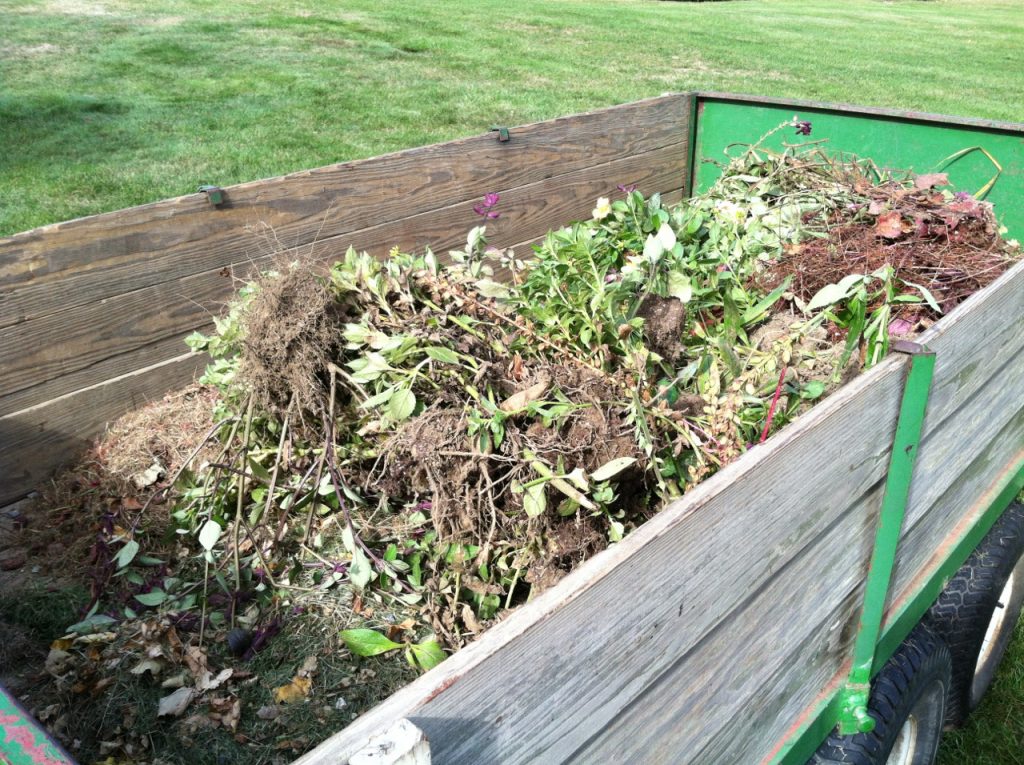
Here in northwestern Connecticut, the fall foliage show is nearing its peak, and in some places, the leaves have begun to fall. They rustle at our feet as we go about our rounds. This is Nature’s way of telling us it’s time to clean the garden.
Clearing out beds and borders means different things to different people. Some gardeners clear every last leaf and past-bloom plant from their gardens while others find reasons to leave everything as is until spring. We fall somewhere in the middle. We believe that maintaining a healthy garden and nutritious, well-structured soil requires different cleanup rituals for different garden spaces. At the farm, here’s how we go about it:
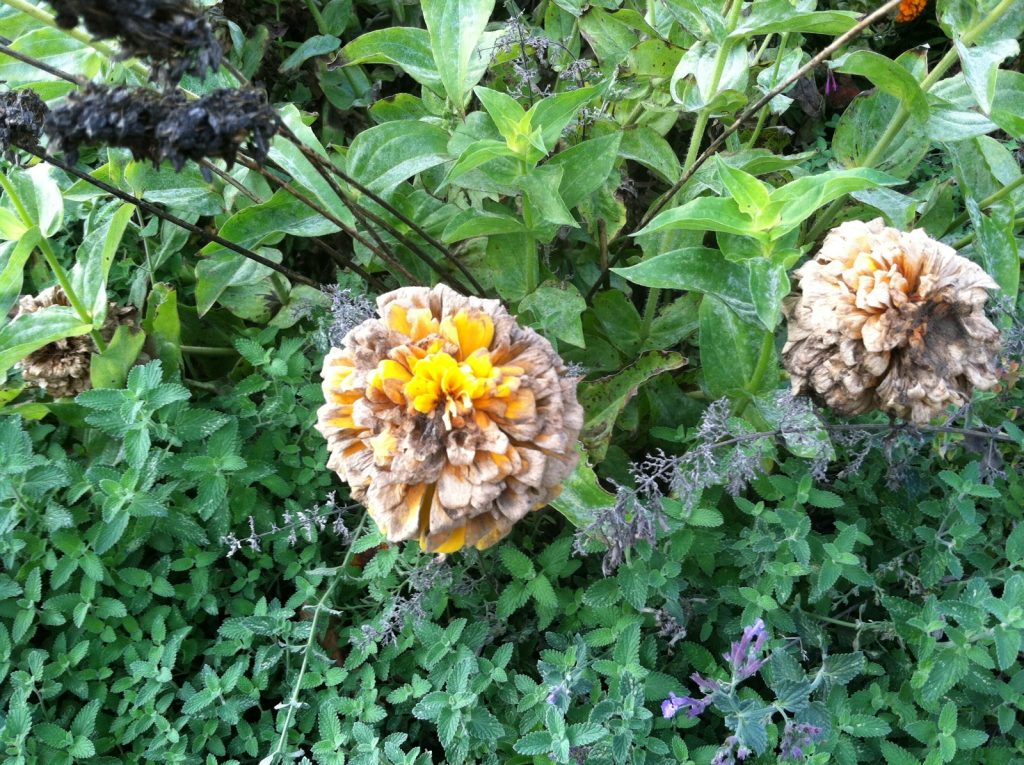
Remove Most Annuals
For starters, we remove most annuals. In general, these plants are easy to spot because after the first hard frost, many of them, including impatiens, begonias, and coleus, have withered and turned brown. If the spent foliage and blossoms on these plants are free of mold and disease, we put them in the compost pile. If we see traces of powdery mildew (zinnias are often afflicted), downy mildew or other diseases, the plants are put into trash that’s hauled off the property. Keep in mind that any mold or disease that’s allowed to stay in the garden will overwinter and reinfect new growth in spring.
Some annuals argue to be removed a bit later in the fall. “If the Cosmos or verbena bonariensis are still green and self-sowing, I will leave them until later,” says nursery manager Barb Pierson. “Plants like Rudbeckia ‘Prairie Sun,’ which can overwinter here, will be left until spring. Kale is pretty late in the season, too.”
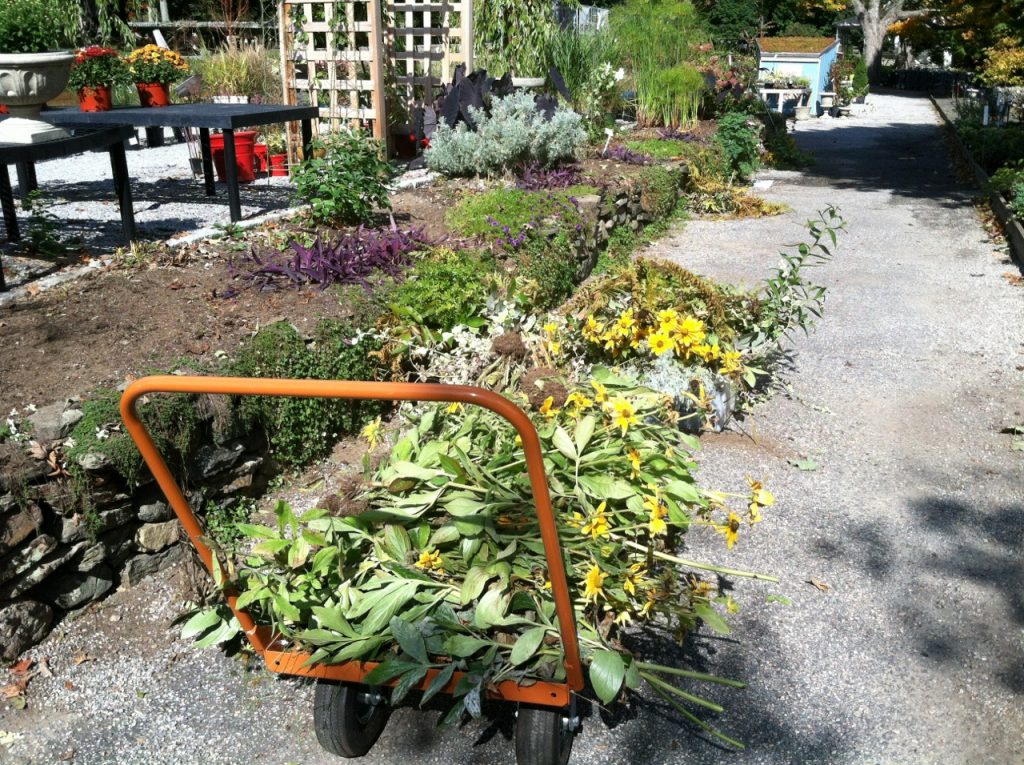
Clean Out the Vegetable Garden
In the kitchen garden, Pierson removes all vegetable plants, paying special attention to any varieties, such as tomatoes, that may have fungal leaf spots and mildew. Afflicted plants must be completely removed and put into the garbage (or carted to the dump) or the same afflictions will plague next season’s plants. “Most vegetable plants are best removed unless you are growing fall lettuce or other cold crops here in New England,” Pierson says. “If we plan to plant tulips in the raised beds for a nice spring show, this is the time to do it. If we don’t plant bulbs, we will remove any soil that comes up with the vegetables and add fresh soil in spring. Compost can be added in the fall if it is fresh, but we prefer to do it in the spring because we use fully composted material. Each spring, we replace the top 1/3 of soil – at the least – for best results. Mulching can attract digging rodents so we don’t mulch the beds during the winter months.”
Perennials & Shrubs
In the perennial garden, our methods vary. In the shady beds near the store, our gardeners clean and clear away dead and dying foliage. They cut back ferns, hostas, astilbes, and ligularias. Why? One year, when they let the decaying leaves lie, they discovered that the cushy, warm environment attracted critters who dug around and sometimes nested in the leaf mulch. That would have been all right except the critters didn’t stop at the mulch. They burrowed into the roots of the plants, inadvertently killing a few, and those had to be replaced the following spring.
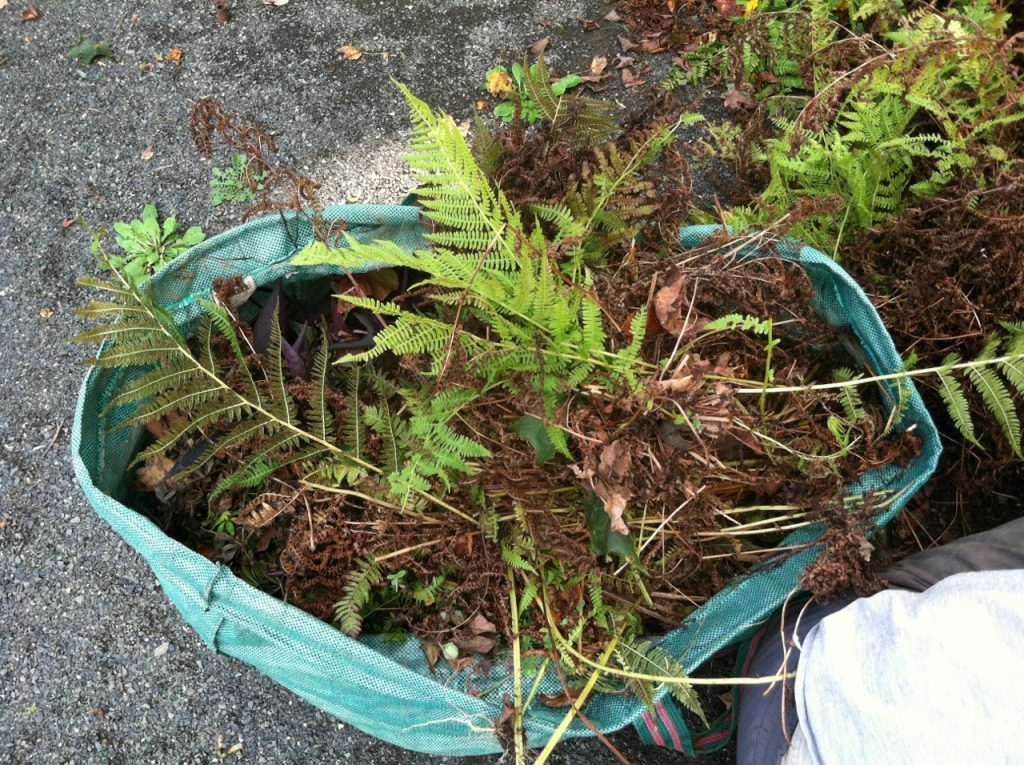
In areas where critters don’t pose much of a problem, Pierson and many others believe that the decaying leaves of most deciduous trees are beneficial to the garden. For starters, they form a natural leaf mulch that provides insulation for perennials and shrubs. Oak leaves, which are waxy and don’t easily break down, are particularly good for insulation. Mounding them around perennials and shrubs protects the plants from seasonal temperature swings. Pine needles are another fine insulator, and they’re especially good for acid-loving plants including rhododendrons and azaleas. Leaves that break down more readily such as maple, ash and birch leaves add organic nutrients to the soil, and help improve soil structure.
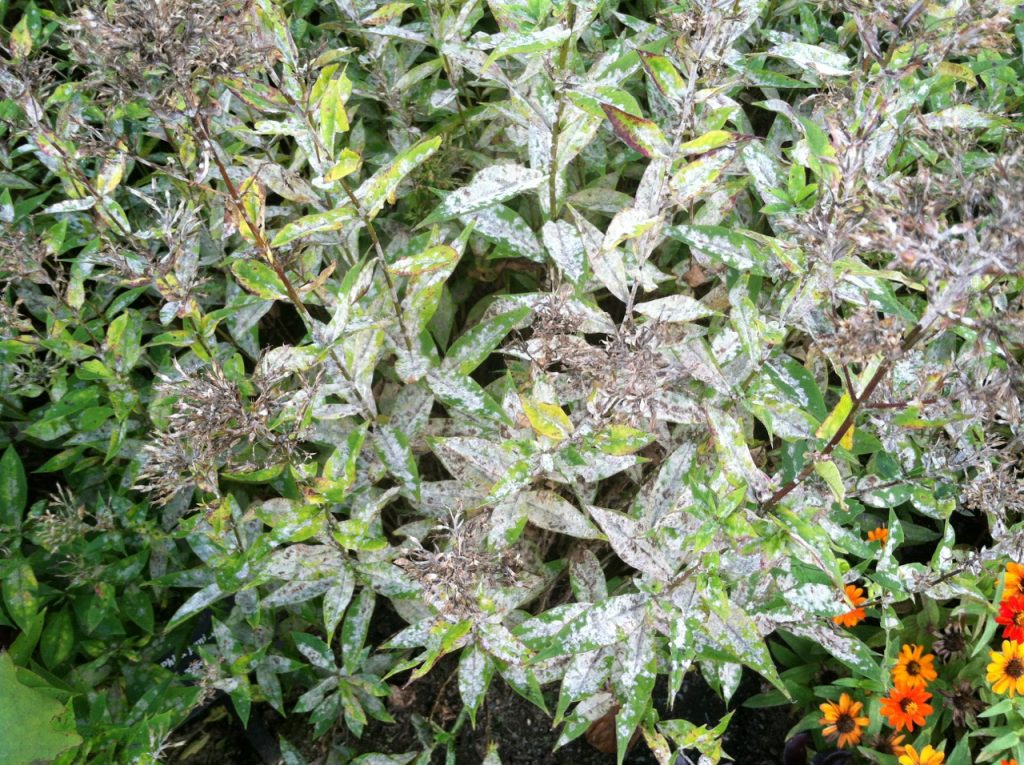
As with annuals and vegetable plants, it’s important to note that any perennials or shrubs that exhibit mold or disease should be cut back, and the spent foliage and blossoms should be carted away to the trash (not the compost pile). Plants like Perovskia (Russian Sage) should not be cut to the ground, Pierson says. “The most important thing to remove is the foliage – not the crown or stems – so I would say remove leaf litter and prune stems as you would for that variety, in general 3-4” above soil level.” Some of the perennials and shrubs most commonly affected by powdery mildew include peonies, monarda (bee balm), phlox, and roses. As with vegetable plants and annuals, if you leave afflicted plants in the garden, the mold and disease will overwinter and reassert itself in spring. The mold won’t interfere with blossom production, but it will detract from the beauty of the foliage.
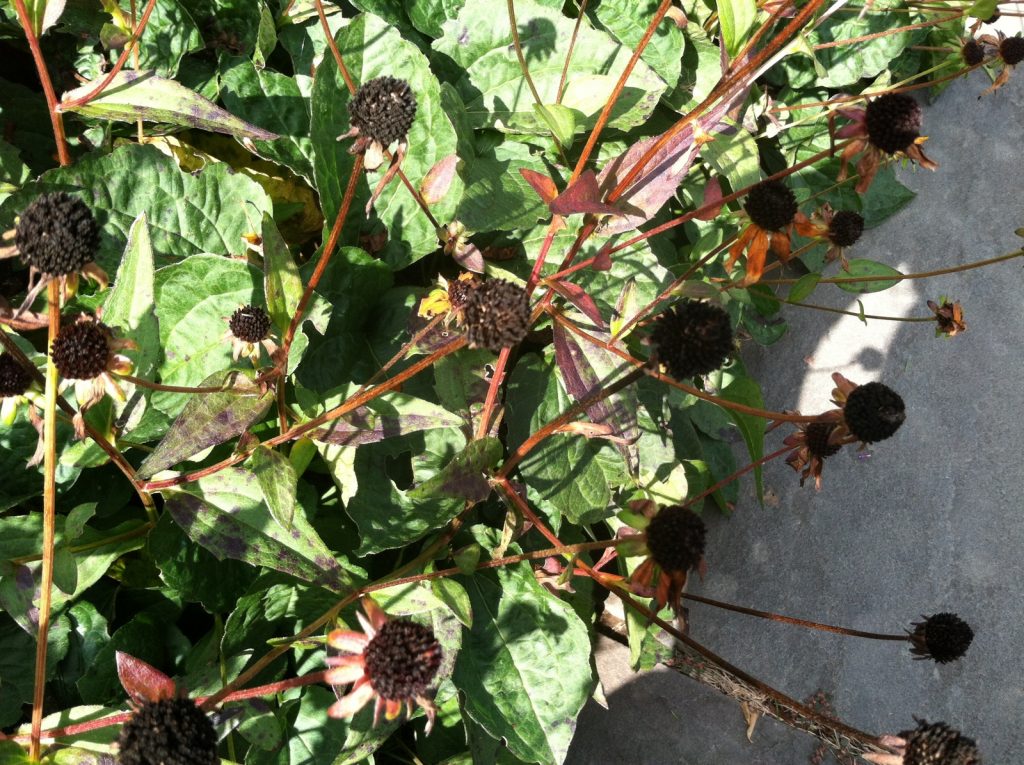
As you cut down bee balms, phlox and peonies, keep in mind that there are other perennials and shrubs you’ll want to keep. While ornamental grasses can be cut back in fall (leaving 6” of growth to protect the crowns), the argument for leaving them until spring is that they look quite lovely dusted in snow. The seed heads of Echinacea and the berries of Ilex verticillata (winterberry) feed the birds as winter sets in. The pods of Asclepias, the flower clusters of Sedum ‘Autumn Joy’ and Eupatorium, and the seed heads of Echinaceas (Coneflowers) all provide winter interest.
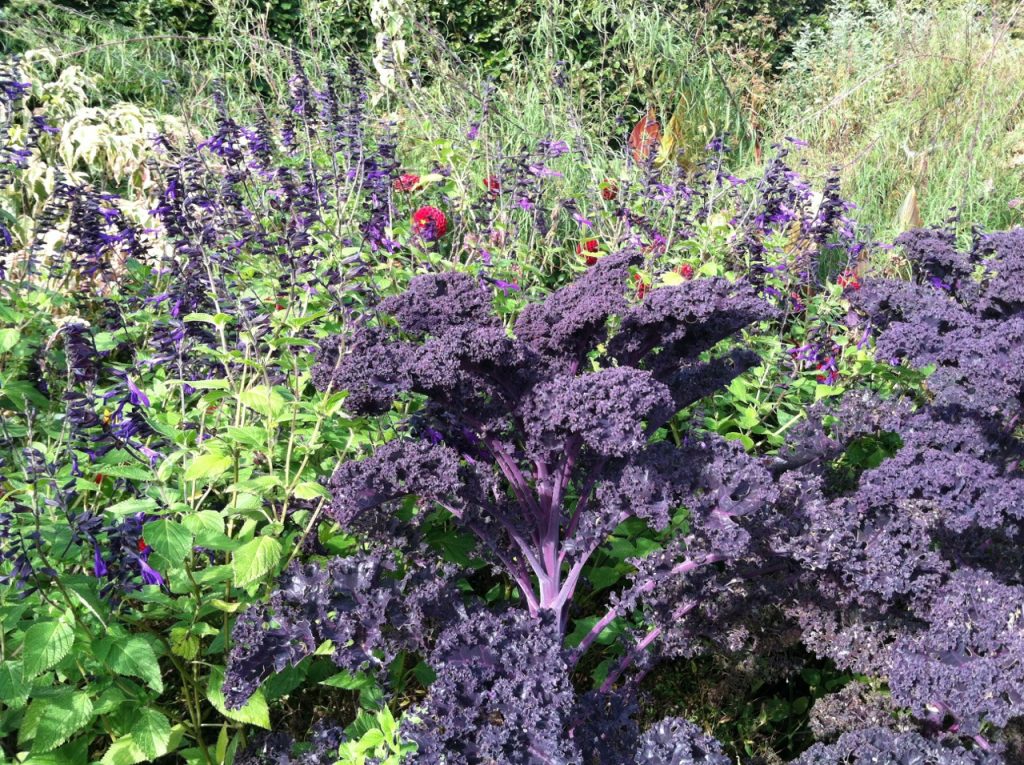
So clean as much or as little as you choose depending on the types of plants you have in your garden. But whatever you decide, it’s time to grab your rake and pruners, and spend a few days in the glorious autumn weather putting your garden to bed.
